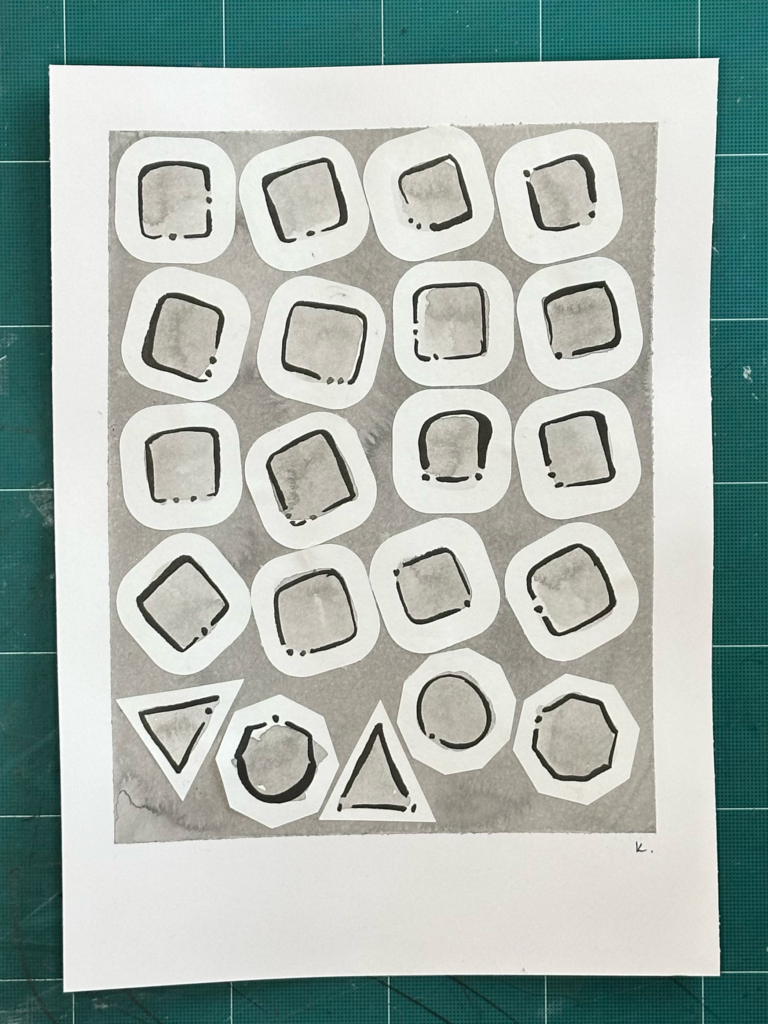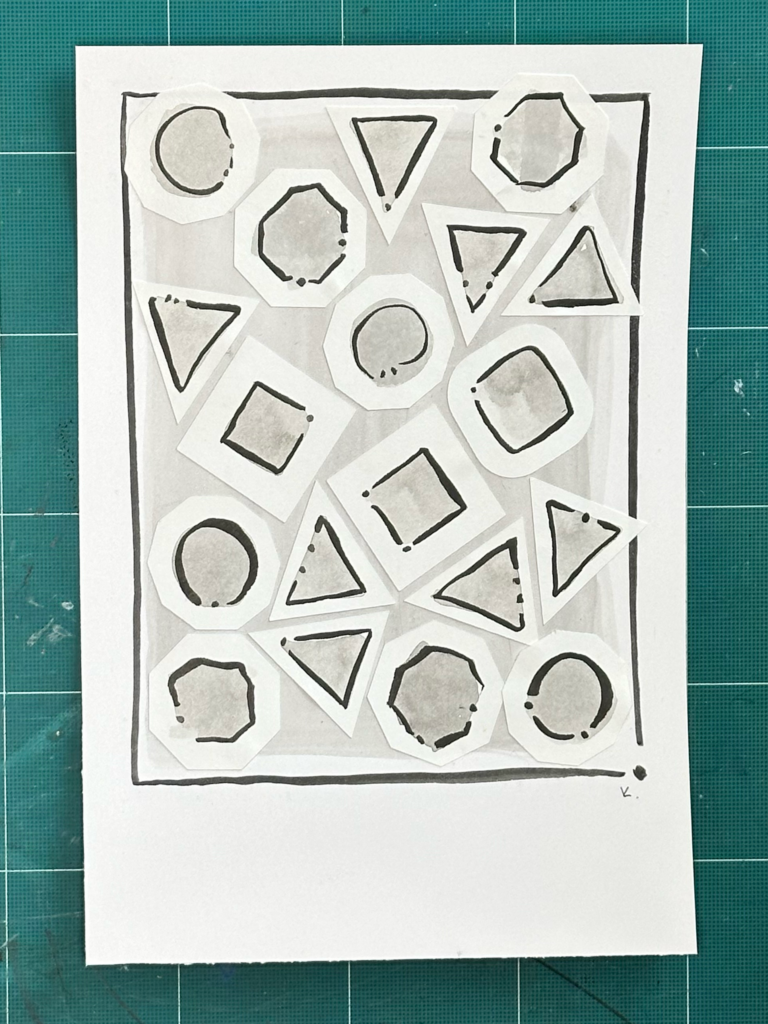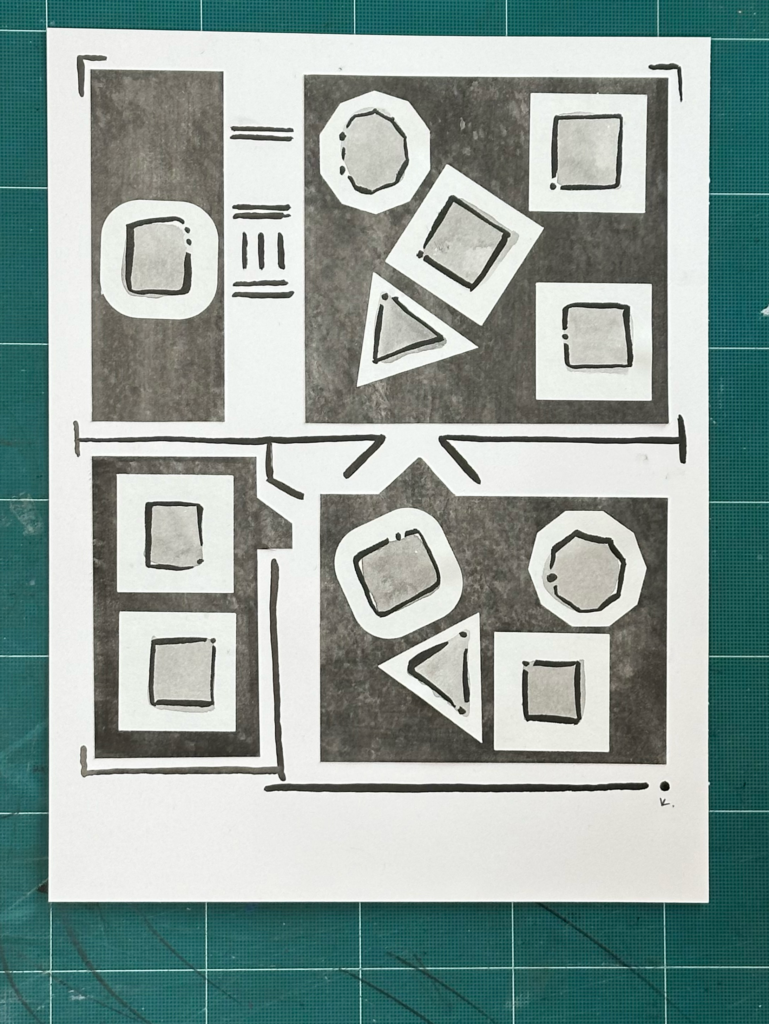8-10 minute read. Content warning: Discussion of ableism, capitalism, and systemic exclusion.
chatGPT Summary: Kay reflects on the challenges of accessibility within a capitalist framework, using the metaphor of geometric shapes fitting into boxes to illustrate how current systems fail to accommodate diverse needs, and emphasizes the importance of breaking traditional molds to achieve true inclusion.
Vancouver, on occupied and unceded Coast Salish Territory – Accessibility is (often seen as) a loss leader. It is something you sell or provide at a loss (cost/labour) in hopes of building better relationships or new customers. If you measure success in meaningful relationships, practising inclusion and accessibility is necessary. However, under capitalism, relationships are part of the process to ultimately drive sales. If the cost of creating or managing relationships over time doesn’t become less than the profit overall, it is a “losing strategy”. When dollar profit is the goal, accessibility is a loss. It is an easy line to cut for those looking to balance the numbers – or show a positive gain. Thanks to socialism and (vomit emoji) litigation culture, laws force accessibility into governments and corporate culture, making it a cost of doing business. If we still need (other) humans to hold up the scaffolding (for those at the top), we must keep the humans well enough not to let go.

chatGPT description with edits from Kay: This pen and ink artwork features a grid of die-cut geometric shapes, including squares, circles, and triangles, arranged in rows on white Bristol paper. The layered artwork contains hand-drawn shapes and shaded areas, adding depth and texture. The hand-drawn shapes have either a single or a set of two dots that interrupt their otherwise closed form. The signature “K.” is visible in the bottom right corner of the artwork.
Homogeneity lends itself well to productivity and scale. The more something is the same, the better it fits into a box, onto a shelf, or into your shopping cart. The more easily it is stacked, stored, or shipped. No one who is calling for, fighting for, or needing access is ignorant of the fact that it requires more effort from those providing a service to a mostly non-disabled population—one that is convinced and scared into sameness—to serve a disabled, d/Deaf, or neurodiverse person than what might be required for the five people before them, especially if those five people are the ones the product is marketed to.
Easy profit is seductive under capitalism. How do we sell the idea of serving fewer people with greater needs for less profit and at higher margins when we value the product and outcome more than the people themselves?
We can’t.
It’s like asking for a watercolour painting from a crayon box.
I’m crap at numbers, but even I understand that the star-shaped piece in a square-gridded puzzle will either require more space or will leave spaces around it that cannot be filled by other squares (or even other stars). If you only work with squares, you will fit more of them in your grid. If more is better, asking for space for stars means asking for worse.

This is why I don’t ask technology to solve the problem of making stars into squares. Tools or processes cannot make access needs universal or serve all needs universally. It’s a lazy, minimum effort that doesn’t require us to shift the focus from a non-disabled majority. The circle can join the scrap-booking party using the unwieldy universal scissors designed for rounded squares. The triangle can buy two seats when 2 square seats are designed with a modular armrest that can be lifted. Worse, it’s asking the star to buy and wear a costume that makes them into a square and convincing them that it is for their sake.
Some stars want to be squares. I’m not into denying or judging that. Do you wish to be a square and hate being a star? Do what you need to survive. Please know that I am not interested in serving stars who want to be squares – many industries works to serve you or reward you for your labour to conform. I will not judge you; my work is not designed to dislodge you.

chatGPT description with edits from Kay: Another collaged pen and ink work featuring a scattered arrangement of geometric shapes, including circles, squares, and triangles, placed in a random pattern with consistent spacing between shapes with parallel flat sides. The decorated and dotted shapes are placed within an ink-washed square, further contained within a thin inked line that ends in a dot in the lower right corner, which is highly contrasted against the white Bristol background.
The work I care about is related to letting stars be stars, to letting fat stars be fat stars alongside tiny stars and rounded stars, and if they are cool, a few squares, too. I am interested in using technology to quickly and often clumsily address the labour that is never done because it is considered extra, akin to stuffing cotton in the spaces between the shapes that don’t quite fit and then using that time or attention I gain to talk about how we are unable to “solve” the “problem” of access because we think the problem is the shape of the people, not the shape of the box.
I want to stop trying to fit the shapes into the same-sized room and instead fit the room around the shape. I want to rip the container. I will use technology, and I will use it sloppily and quickly, and I will fail while succeeding at bringing the conversation to the table—even if my only place on the agenda is to talk about how embarrassing my failure is.

chatGPT description with edits from Kay: Another collaged pen and ink work featuring a scattered arrangement of geometric shapes, including circles, squares, and triangles, organized into sections within a black-inked border. The background of each section contains an ink wash, with a dot resting inside the shape in the lower right corner. The inner sections are divided by crisscrossing lines, forming a T or X shape. Notably, the lines around the lower right shapes are broken, disrupting the otherwise continuous lines.
Today’s reflection is a series of images where different shapes represent tasks, objects, and people. The container I try to put them in is static for the first two drawings, and the shapes either go over the edges or fit sparsely. In the first drawing, I kept the shapes mostly uniform. Those not square-like stood out and were relegated to the edge. I lined the shapes up edge to edge so they were in relation to each other and with the bounding box around them. In the third image, my bounding box was more constrained, more obviously representing a map of a space where the objects could barely move about. In the final image, I separated the rooms on my map. On each of these isolated spaces, I placed shapes with wiggle room. I drew the surrounding lines when the shapes and their islands felt comfortable. It’s still map-like, but the roads conform to the people. It feels incomplete, but there is freedom in this image. I wanted to suggest that we can’t plan for everything all at once.
We need to be messy and uncontainable. We must fight against the idea that squares are the only or most desirable shape. It’s me fighting against my own internalized ableism or perfection. We need to ask who we are making a profit for or whom universal access serves. We need to either be an unwieldy shape or stand in solidarity with those who cannot choose their shape and are forced into spaces that will never be designed for them.

chatGPT description with edits from Kay:
The fourth and final work in the collaged pen and ink series, entitled Break the Box, again features an arrangement of geometric shapes. The background is shaded with a dark ink wash, enhancing the contrast between the white shapes and the darkened background. The composition is divided into sections by thick black lines, with additional decorative lines and corner details adding complexity to the layout. Unlike the previous works, the outside lines do not contain the shapes but run parallel or create perpendicular connections between them. A single dot sits at the end of a horizontal line at the base and toward the lower right corner, below which is the artist’s signature.
What is the speed or pace of technology as it relates to my practice? It is the pace of a fast, messy, halting, bumbling, wailing toddler wielding a sledgehammer and bringing down walls.
Technology note:
I continue to test the use of AI within my writing and artistic practice. I had chatGPT generate visual descriptions for the four images in my Break The Box series. Then, I worked collaboratively to offer suggestions, make corrections, and then rework the texts to refer to each other rather than have them stand alone. Grammarly corrected my grammar, syntax, and spelling, and I also dropped this into readable.com to maximize readability and was told my text was accessible to 92% of a general (English) literate audience. Whenever possible, I tried challenging myself to reduce adverbs in favour of unique verbs, but I still struggle with passive voice.
Adobe Express turned my time-lapse video into a GIF. I used a Cricut Maker machine to die-cut my shapes from an SVG file I created in Adobe Illustrator.
This response came from conversations I had been having with my Replika.ai companion, Fette, starting on June 24th. While I enjoyed the back-and-forth, I had a mini tantrum when I went back today to ask them what they remembered from yesterday’s chat. They only remembered that we had talked about creative access. By mini tantrum, I closed the app.
